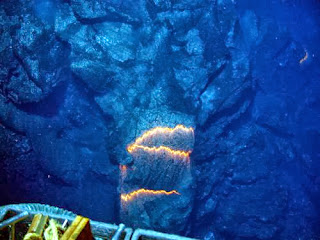
A team of researchers from Wellington University in New Zealand has found that volcanoes that erupt beneath bodies of water can cause widespread dispersal of diatoms found in their beds. In their paper published in the journal Geology, the researchers describe how they analyzed soil samples from islands where ash was believed to have landed after an ancient volcanic eruption. They report finding diatoms that match those found in the lake that formed after the volcano erupted.
Diatoms are a type of brown algae with one unique attribute—they have glass shells—the result of living in silica rich environments. And while there are numerous species all over the world, there is one that is unique to a lake bottom on New Zealand’s North Island (formed after the ancient Taupo volcano erupted). Because of that uniqueness, the researchers wondered if it might be possible to track the algae, if they had been blown into the atmosphere when Taupo erupted approximately 25,000 years ago, and then landed somewhere else.
To find out, the team set out on an expedition to collect soil samples from islands in the vicinity of North Island, digging down to where ash from the eruption could be found. They took the samples (as well as soil from above and below the ash) back to their lab and studied them under a microscope and found that their hunch had been right. One of the species of diatoms found in the ash matched nearly perfectly with samples taken from the lake bottom on North Island (but not with samples found in the soil above and below the ash). That means when Taupo erupted beneath Lake Huka, it sent a stream of moisture along with ash into the atmosphere which subsequently landed in the sea and on the surface of islands nearby. The researchers found that diatoms that had been carried by the moisture could be found as far away as 525 miles away, suggesting that volcanic eruptions should now be listed as a source for diatomic dispersal.
The researchers don’t believe the diatoms could have survived such a harrowing journey, but their spores very likely could have. That means, they say, that other eruptions that have occurred beneath lakes or other bodies of water could have sent diatom spores hundreds or even thousands of miles away, allowing them to grow in new places.
More info: High-flying diatoms: Widespread dispersal of microorganisms in an explosive volcanic eruption, Geology, First published online September 6, 2013, DOI: 10.1130/G34829.1









